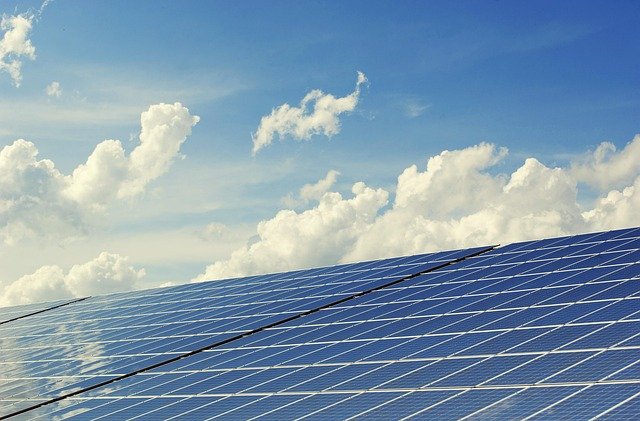Powering Homes & Businesses with Solar Generators: A Smarter Energy Shift
As energy costs rise and environmental concerns grow, solar generators are becoming an increasingly popular alternative power source. These portable systems capture sunlight through photovoltaic panels, convert it to electricity, and store it in batteries for later use. Unlike traditional generators, solar options provide clean, renewable energy without fuel costs or emissions, making them attractive for both residential and commercial applications.

Solar generators represent a significant advancement in renewable energy technology, offering both homes and businesses a reliable alternative to conventional power sources. These systems combine solar panels, battery storage, and power management components to deliver clean electricity on demand. As climate awareness increases and technology improves, more property owners are exploring these sustainable power solutions for everything from emergency backup to daily energy needs.
How Solar Generators Work
Solar generators operate through a straightforward but ingenious process. The system begins with photovoltaic panels that capture sunlight and convert it directly into electrical energy. This direct current (DC) electricity then passes through a charge controller, which regulates the voltage and current to protect the battery bank from overcharging. The batteries store this energy until needed, at which point an inverter converts the DC power into alternating current (AC) electricity compatible with standard household appliances and electronics.
Modern solar generators incorporate advanced battery technologies like lithium-ion, which offer greater energy density and longer lifespans than traditional lead-acid batteries. Many systems also feature smart monitoring capabilities that allow users to track energy production, storage levels, and consumption patterns through mobile applications or web interfaces.
Why More People Are Choosing Solar Generators
The growing popularity of solar generators stems from several compelling advantages. First and foremost is energy independence—users can generate their own power without reliance on utility companies or fossil fuels. This independence becomes particularly valuable during power outages or in remote locations where grid access is limited or nonexistent.
Environmental benefits represent another major driver of adoption. Solar generators produce clean energy with zero emissions during operation, helping reduce carbon footprints and air pollution. For environmentally conscious consumers and businesses, this aligns with sustainability goals while providing tangible benefits.
Additionally, many jurisdictions offer financial incentives for renewable energy adoption, including tax credits, rebates, and favorable net metering policies. These incentives can significantly reduce the initial investment cost and accelerate the return on investment for solar generator systems.
Factors to Consider Before Buying a Solar Generator
Selecting the right solar generator requires careful consideration of several key factors. Power capacity should be your first consideration—determine your energy needs by calculating the wattage requirements of the appliances and devices you plan to run. Solar generators range from small portable units providing a few hundred watts to large systems capable of powering entire homes.
Battery storage capacity is equally important, measured in watt-hours (Wh) or kilowatt-hours (kWh). This determines how much energy your system can store and how long it can power your devices without recharging. For occasional emergency use, smaller capacities may suffice, while off-grid living demands substantial storage.
Portability considerations vary widely depending on intended use. Some solar generators are designed for camping or mobile applications with lightweight components and carrying handles, while others are permanent installations with fixed solar arrays and battery banks. Charging speed and expandability are additional factors that can significantly impact the system’s practical utility over time.
Solar Generators vs. Traditional Power Generators
Comparing solar generators with conventional fuel-powered alternatives reveals distinct differences in operation, maintenance, and overall ownership experience. Traditional generators typically run on gasoline, diesel, or propane, providing immediate power but requiring ongoing fuel purchases and regular maintenance. They also produce noise and exhaust emissions during operation.
Solar generators, by contrast, operate silently with zero emissions and minimal maintenance requirements. While they have higher upfront costs, their operating expenses are negligible since sunlight is free. Traditional generators can provide consistent power regardless of weather conditions but come with fuel storage concerns and potential supply issues during emergencies.
Reliability comparisons depend largely on specific use cases. Fuel generators deliver consistent power output regardless of weather but require fuel availability. Solar systems depend on sunlight exposure but offer greater long-term reliability with fewer mechanical components to fail and no dependence on fuel supply chains.
Cost Overview of Solar Generator Systems
| System Type | Capacity Range | Typical Price Range | Estimated Lifespan |
|---|---|---|---|
| Portable Solar Generator | 500-2000Wh | $500-$2,000 | 5-10 years |
| Mid-Size Home System | 2-5kWh | $2,000-$5,000 | 10-15 years |
| Large Home/Small Business | 5-15kWh | $5,000-$15,000 | 15-25 years |
| Commercial System | 15+ kWh | $15,000+ | 20-30 years |
Prices, rates, or cost estimates mentioned in this article are based on the latest available information but may change over time. Independent research is advised before making financial decisions.
While the initial investment in solar generator technology is higher than traditional generators, the long-term economics often favor solar solutions. With minimal operational costs, no fuel expenses, and decreasing equipment prices as technology advances, the total cost of ownership can be significantly lower over the system’s lifespan. Many users report break-even periods of 3-7 years depending on usage patterns and local energy costs.
Additional economic factors include potential increases in property value for permanent installations and protection against rising utility rates. For businesses, solar generators can also provide marketing advantages through demonstrated environmental commitment and reduced operational costs.
Conclusion
Solar generators represent a versatile and increasingly accessible energy solution for both residential and commercial applications. As technology continues to improve and costs decline, these systems offer compelling advantages in terms of sustainability, independence, and long-term economics. Whether used for emergency backup, off-grid power, or supplementing conventional energy sources, solar generators provide a pathway toward more resilient and environmentally responsible power generation. With careful planning and appropriate sizing, they can deliver reliable performance while reducing environmental impact and potentially lowering overall energy costs.




